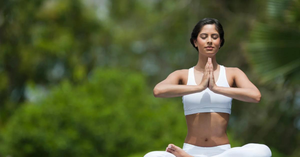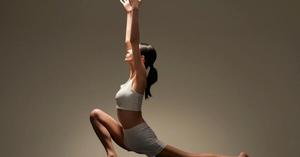“Within your mind lies a landscape more peaceful than any place you could travel to.”
Stress has become a near-constant presence in modern life. Whether it comes from long working hours, family responsibilities, or the uncertainty of health and finances, the body and mind often remain in a state of quiet tension. While medical treatment and professional support are crucial in managing chronic stress and anxiety, complementary practices such as guided visualization are gaining recognition in hospitals and wellness programs worldwide.
Guided visualization, also known as guided imagery, is a therapeutic technique where you use mental pictures and sensory imagination to create a state of calm. The method is simple, safe, and surprisingly powerful when practised with consistency.
The body reacts to imagined experiences almost as strongly as to real ones. When you vividly picture a soothing environment like sitting by the ocean at sunset, the brain signals the body to relax. Heart rate slows, blood pressure drops, breathing deepens, and muscle tension eases.
This is because guided visualization activates the parasympathetic nervous system, often called the “rest and digest” system, while reducing the overdrive of the stress-related sympathetic system. Functional imaging studies show that regions of the brain responsible for emotion regulation and pain perception respond positively during imagery practices.
Major centres such as the Mayo Clinic and the Cleveland Clinic recommend guided imagery as a supportive tool for stress, pain, and anxiety. The NHS also provides audio resources to help people learn simple visualization practices at home.
Over the last two decades, numerous studies have explored how guided imagery benefits patients. Some key findings include:
While guided visualization is not a replacement for medical treatment, its role as a supportive therapy is clear.
Guided visualization can be practised almost anywhere. Here is a medically recommended method to begin:
Choose a quiet environment where you feel safe. Dim the lights, silence notifications, and settle into a comfortable sitting or lying position.
Take three slow, deep breaths. Inhale through the nose, filling the lower lungs, and exhale through the mouth with a sense of release. This signals the body to begin relaxing.
Notice a few sensations: the weight of your body on the chair, the contact of your feet with the floor, or the temperature of the room. This keeps your mind grounded.
Visualize a calming scene. It may be a quiet beach, a mountain trail, a blooming garden, or a childhood memory of comfort. The key is to choose something that feels personally safe and nurturing.
Repeat a short sentence silently, such as “I am safe” or “Peace flows through me.”
Spend 10–15 minutes immersed in your chosen image. If distracting thoughts arise, acknowledge them without judgment and return gently to your scene.
Deepen your breathing, move your fingers and toes, and open your eyes with awareness. Reflect briefly on one detail that made you feel calm.
However, individuals with a history of trauma or severe psychiatric conditions should consult a professional before beginning. Sometimes, vivid imagery may trigger distressing memories.
Guided visualization works best as a complement to professional care. For instance:
It is important to remember that guided visualization does not replace medicines, counselling, or clinical interventions when those are necessary.
Guided visualization is not about escaping reality but about finding a calm centre from which to face it. Each time you practise, you strengthen your mind’s ability to soothe the body. With patience and repetition, this practice becomes a small sanctuary you can carry anywhere behind closed eyes, within a single breath.
About PeriodSakhi
PeriodSakhi is your trusted companion for understanding your menstrual health. With easy-to-use tools, it helps you track your periods, ovulation, fertility, moods, and symptoms, while providing insights into your overall reproductive and hormonal health. PeriodSakhi also serves as a supportive online community where women can share experiences, find reliable information, and access expert-backed guidance on menstrual health, PCOS, pregnancy, lifestyle, and more.
Disclaimer
The views, thoughts, and opinions expressed in this article/blog are solely those of the author and do not necessarily reflect the views of PeriodSakhi. Any omissions, errors, or inaccuracies are the responsibility of the author. PeriodSakhi assumes no liability or responsibility for any content presented. Always consult a qualified medical professional for specific advice related to menstrual health, fertility, pregnancy, or related conditions.
Start the conversation
No comments yet. Start the conversation by leaving the first comment!





